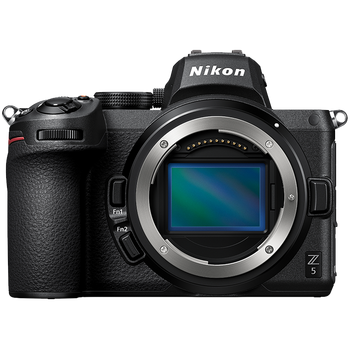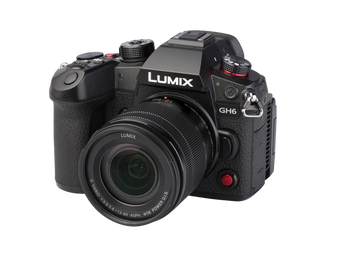- Affordable full-frame option
- High-quality images
- Stabilized photos and videos
- User-friendly design
- Lightweight and portable
- Exceptional video quality
- High frame rate options
- Stabilized footage
- Durable construction
- Flexible touchscreen
- Limited continuous shooting speed
- Crop in 4K video
- Heavier than competitors
- Micro Four Thirds sensor size
Nikon Z5 vs Panasonic Lumix GH6
The Nikon Z5 and Panasonic Lumix GH6 are two highly regarded mirrorless cameras that have gained significant attention in the photography and videography communities. Both cameras offer a unique set of features, specifications, and capabilities that cater to different needs and preferences. In this comparison, we'll delve into the details of each camera, highlighting their strengths and weaknesses, to help you decide which one is best suited for your creative endeavors.
Sensor and Image Quality
The Nikon Z5 features a 24.3-megapixel full-frame CMOS sensor, which provides excellent image quality with impressive dynamic range, color accuracy, and low-light performance. The camera's sensor is capable of capturing images with a wide range of tonal values, making it ideal for landscape, portrait, and wedding photography.
On the other hand, the Panasonic Lumix GH6 boasts a 25.2-megapixel Micro Four Thirds sensor, which, although smaller than the Nikon Z5's full-frame sensor, still delivers outstanding image quality with excellent sharpness, contrast, and color rendition. The GH6's sensor is particularly well-suited for videography, as it provides a wider depth of field and a more forgiving focus system.
Autofocus and Performance
The Nikon Z5 features Nikon's advanced autofocus system, which includes 273 phase-detection points and subject tracking capabilities. This system provides fast and accurate focusing, even in low-light conditions, making it ideal for capturing moving subjects such as wildlife or sports.
In contrast, the Panasonic Lumix GH6 employs a 315-point contrast-detection autofocus system, which is highly effective for video recording and still photography. The GH6's autofocus system is particularly adept at tracking subjects with complex motion patterns, such as those found in dance or action sequences.
Video Capabilities
Both cameras are capable of capturing high-quality video, but the Panasonic Lumix GH6 is specifically designed with videographers in mind. It can record 4K video at up to 120fps and 5.7K video at up to 60fps, making it an excellent choice for creating smooth, high-resolution footage. The GH6 also features a variety of advanced video modes, including V-LogL and 10-bit 4:2:0 internal recording.
The Nikon Z5, on the other hand, can record 4K video at up to 30fps and Full HD video at up to 120fps. While it may not match the GH6's high-frame-rate capabilities, the Z5's video quality is still excellent, with good color grading and minimal rolling shutter effect.
Ergonomics and Build Quality
The Nikon Z5 features a rugged, weather-sealed body with a comfortable grip and intuitive controls. The camera's ergonomics are well-suited for still photography, with a clear and concise menu system and a variety of customizable buttons.
The Panasonic Lumix GH6 also boasts a sturdy, weather-sealed design, but its controls are more geared towards videography. The camera features a vari-angle touchscreen LCD, a built-in waveform monitor, and a plethora of video-specific buttons and dials.
Conclusion
In conclusion, the Nikon Z5 and Panasonic Lumix GH6 are both exceptional mirrorless cameras that cater to different creative needs. The Nikon Z5 excels at still photography, with its full-frame sensor and advanced autofocus system making it an ideal choice for capturing high-quality images in a variety of genres.
The Panasonic Lumix GH6, on the other hand, is specifically designed for videography, with its advanced video modes, high-frame-rate capabilities, and robust build quality making it an excellent choice for creating high-resolution, professional-grade footage. Ultimately, the decision between these two cameras will depend on your specific creative goals and preferences.
If you're a still photographer looking for exceptional image quality and autofocus performance, the Nikon Z5 may be the better choice. However, if you're a videographer seeking a camera that can deliver high-quality, high-frame-rate footage with advanced video modes and features, the Panasonic Lumix GH6 is an excellent option. As mirrorless cameras continue to evolve and improve, both the Nikon Z5 and Panasonic Lumix GH6 represent the cutting edge of technology and innovation in their respective fields.


















